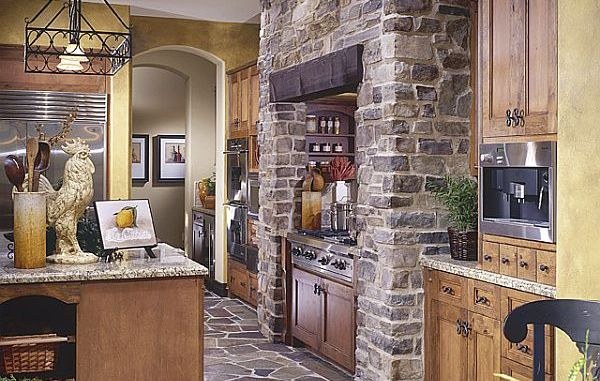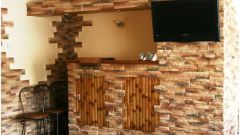Natural stone, most often limestone, has many advantages over other types of decorative coatings: environmentally friendly material, low cost, high resistance to chemical or mechanical damage, the possibility of processing cutting tools, long service life.
In order to properly lay the surface with limestone, it is necessary not only to choose a stone with the lowest percentage of sand, mortar and other foreign inclusions, and consider the material from which made wall, facade or other surface to be decorated.
For laying stone on the surface of concrete preparation almost unnecessary. The only thing to do is to remove the dirt and grease stains. For dirt use the brush stains are removed with a solvent.
To wooden surfaces stone glued poorly due to high absorption and low adhesion. Wood surface must be treated with waterproofing material, and then it is necessary to install a grid of metal to provide reinforcement, allowing to lay the tiles without worrying that it will fall off.
The metal surface is also not the best for fixing stone. It must be primed, to close the metal mesh and further plaster cement-sand mixture in a thin layer.
Since natural stone is always different in size, before laying it is necessary to lay on the floor, forming the most harmonious and beautiful pattern, repeating natural pattern. If you plan to lay a stone facade, you need to remember that this should be done only in warm weather because in the cold the glue will not freeze, and freeze: the stone stays on the wall, but in thaw, there is a risk that it will partly come unstuck.
As glue it is possible to use bitumen mastic or a mixture based on sand, plasticizers and cement. Importantly, the mixture does not impinge on the front of the stone, because it is badly washed from the surface and spoils the appearance of the coating.
To lay the stone you need from the bottom up, causing the solution and on the surface and the stone, and then gently push the stone into the solution. Joints between stones should be as the same width, only in this case, the decorated surface will look beautiful, neat and harmonious. After completion of the work, the joints are filled with a special water-resistant mortar. If the stone is placed back to back, the seams are usually not decorated, as the stones are joined together as tightly as possible.

